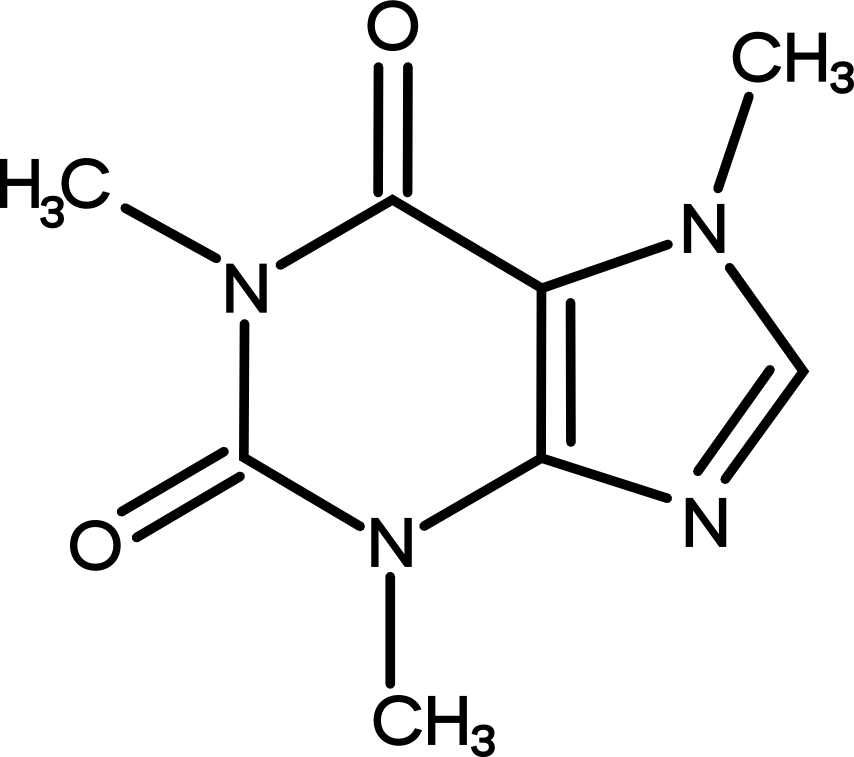Coffee made with a French Press is vastly different from say, a CHEMEX, both because of their design, filtration method, and differences in extraction. But perhaps the one compound that is of most interest to people is that of caffeine, or 1,3,7-trimethylxanthine.
 |
 |
| Chemex | French Press |
For drip coffee, its estimated that ~90% of the caffeine is extracted within the first minute or so of brewing, with espresso having a much lower level of extraction closer to 75-80%.
But why such a difference in extraction?

Caffeine
There are numerous reasons for this, including coffee type, blend, grind size, water temperature, etc. but holding all variables equal - one key factor to explain this difference is contact time1.
For espresso, typical contact time is roughly about 30 seconds, which does not allow for enough time to full extract caffeine from the grounds.
Drip coffee on the other hand, with its much greater contact time of 4-6 minutes has ample time to fully extract, though the vast majority of the caffeine is extracted within the first 60-90 seconds.

